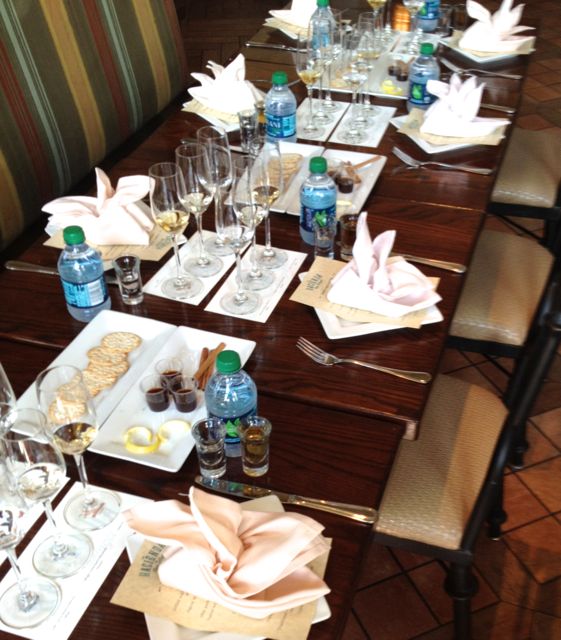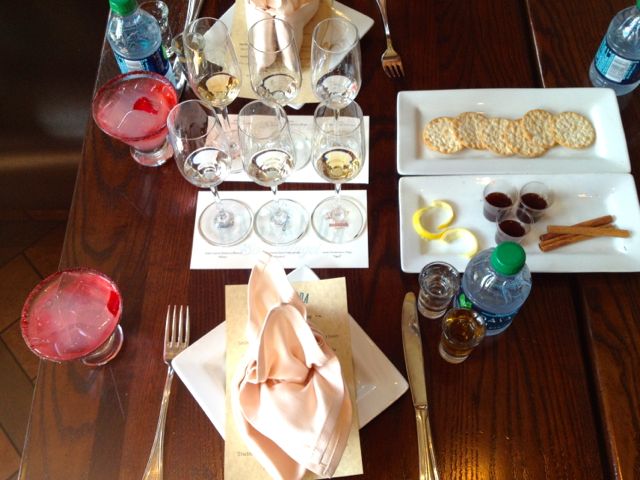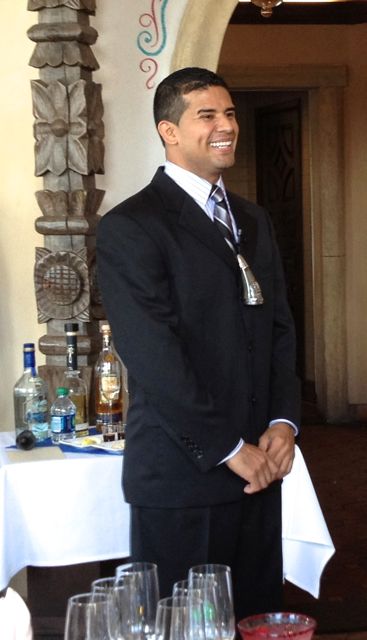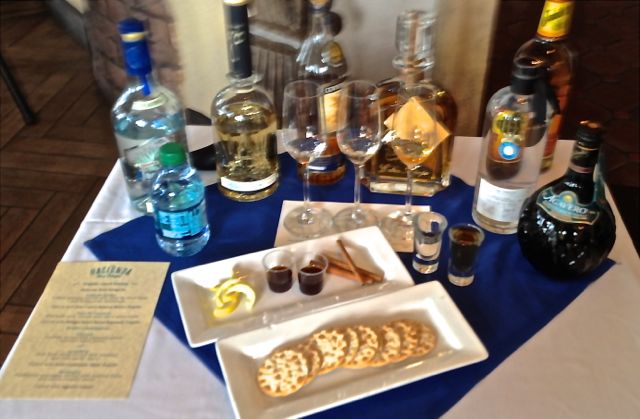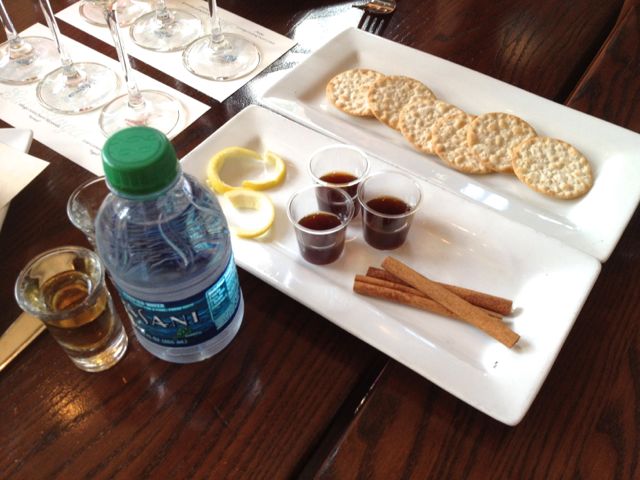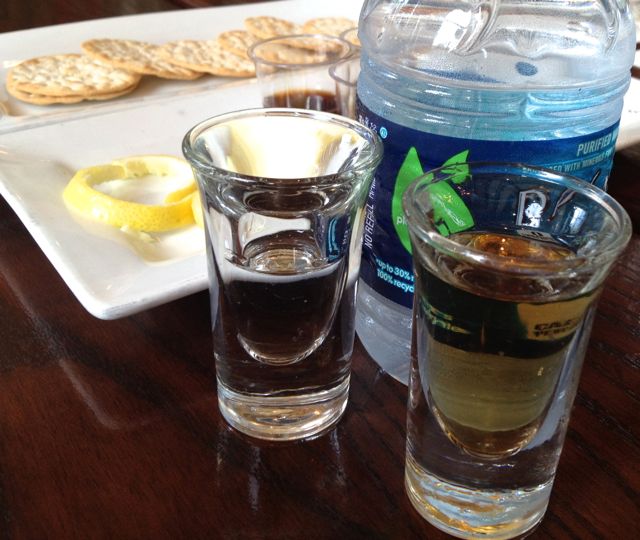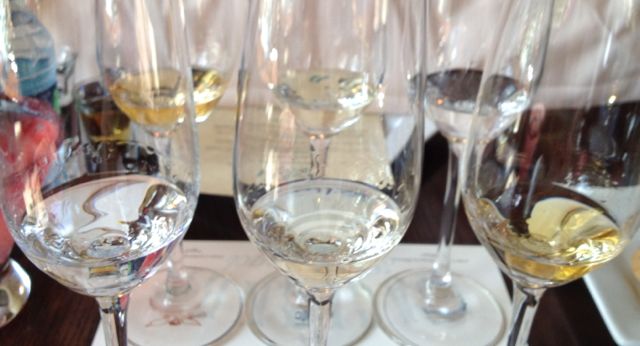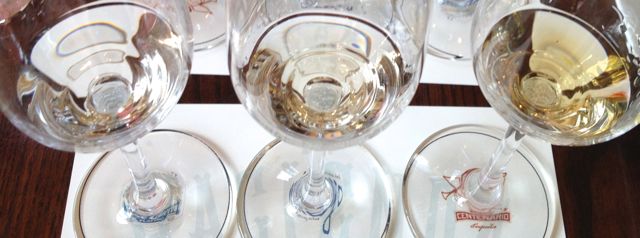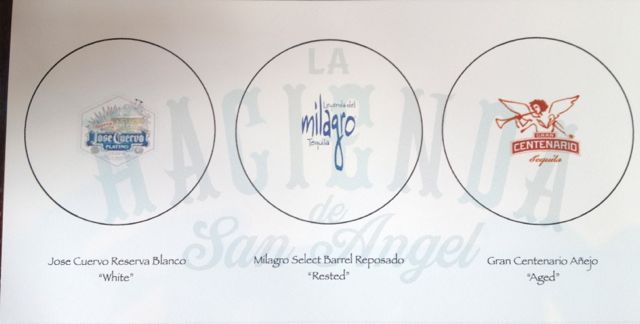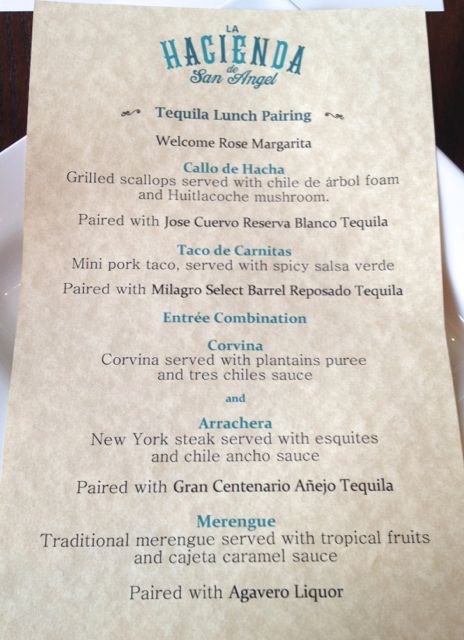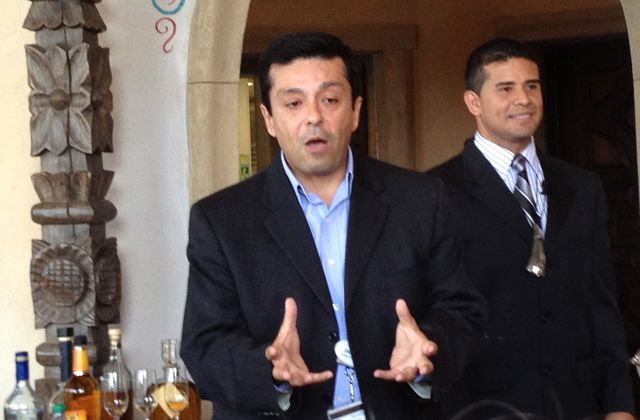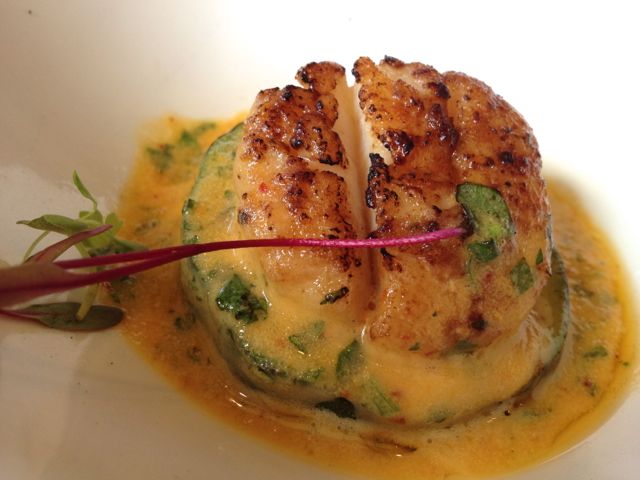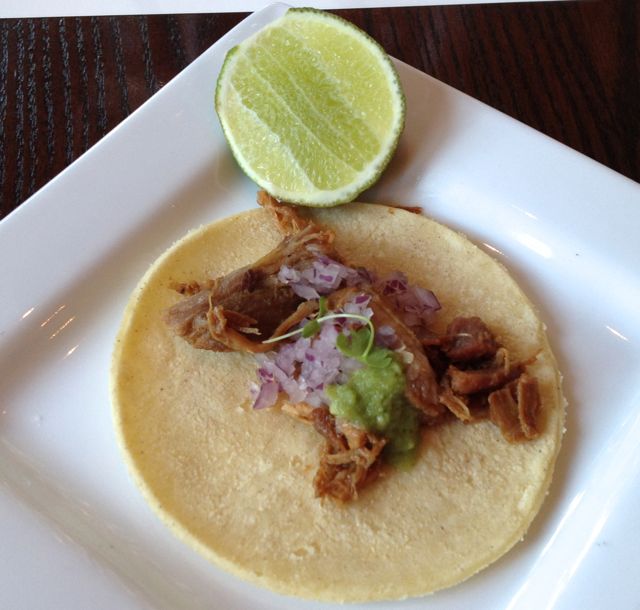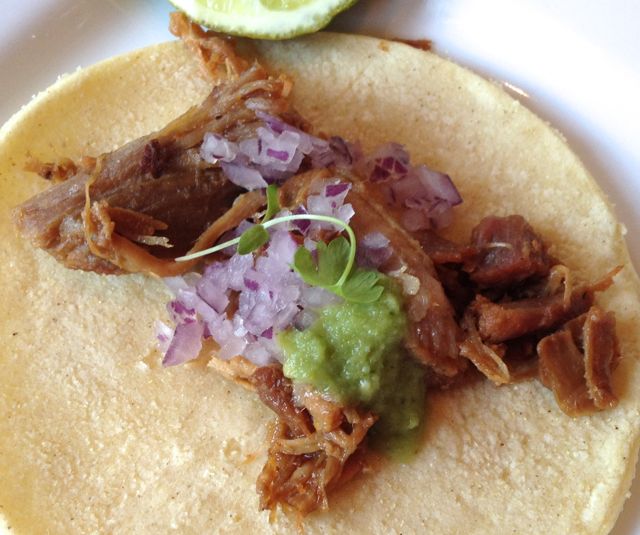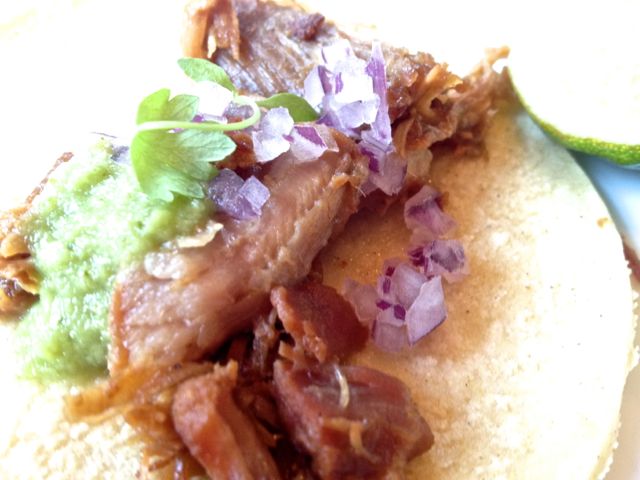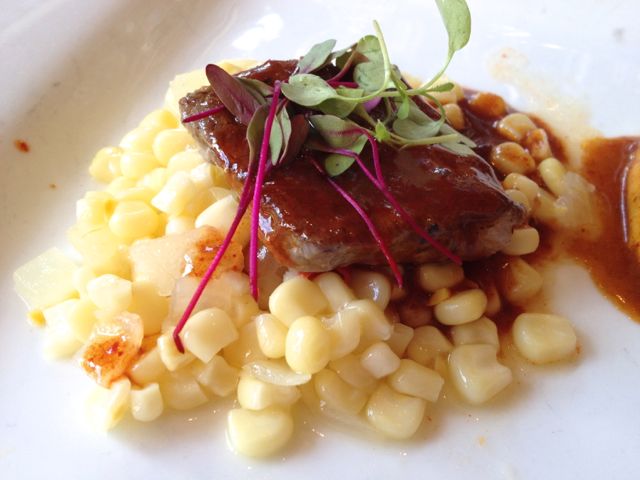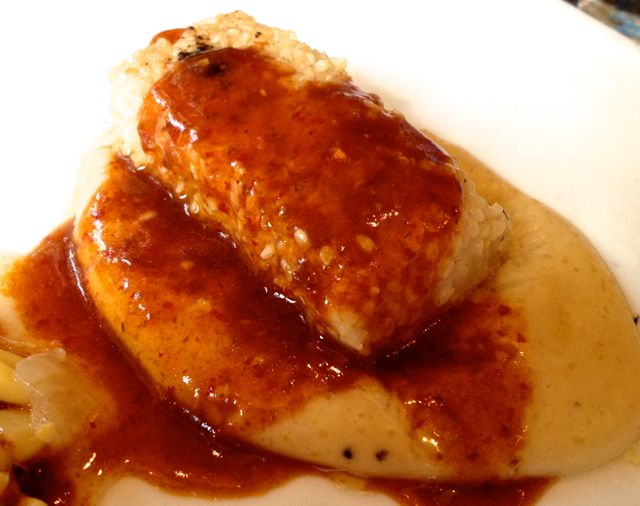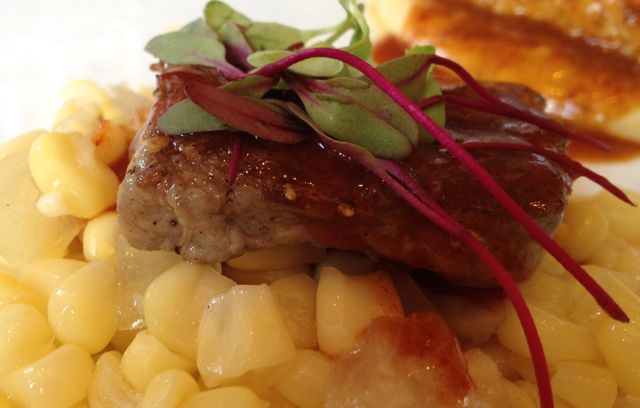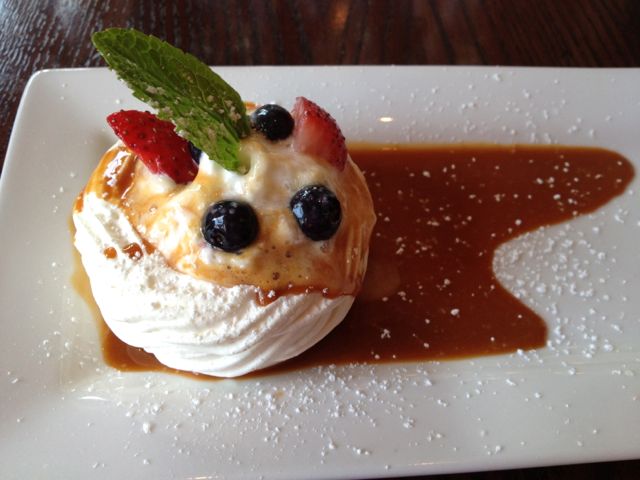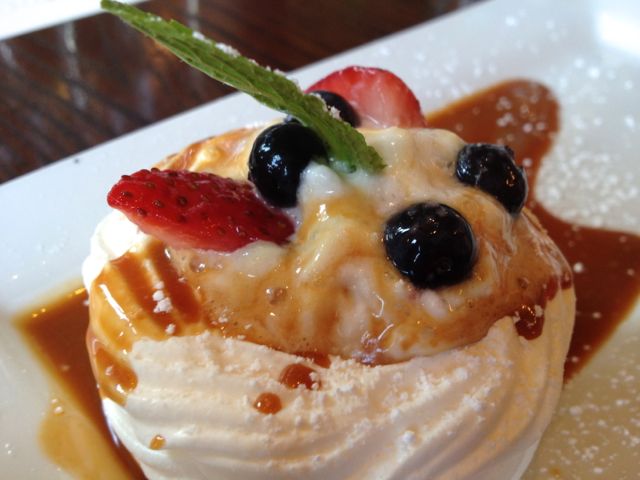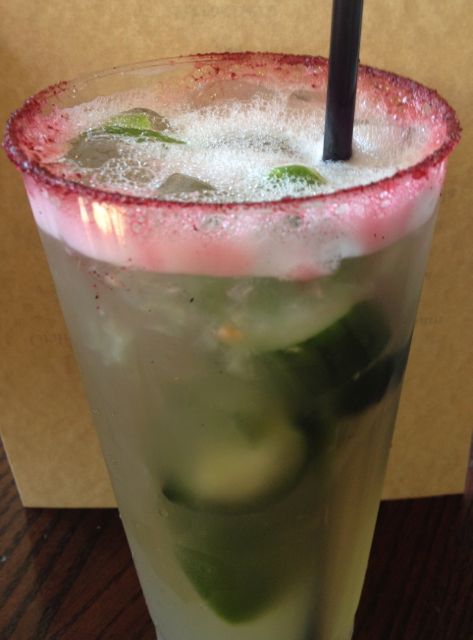Tequila Lunch Pairing
La Hacienda de San Angel
October 5, 2012
We attended this event last year with Al, Judy, and Al’s Big Sister – we enjoyed it immensely and therefore wanted to do it again this year. As with last year (here), we waited until it was our turn to enter the lobby (they check in each party and escort them in individually rather than having everyone standing in the lobby waiting their turns to be seated, it’s a nice bit of ceremony but not much appreciated on a broiling hot day). We were greeted by Darvin, the manager, and handed a Rosita Margarita.
We were shown to our seats and since we were among the first seated, nick was able to get some good photos of the setup.
Our Tequila Expert today is Umberto Soto (Hilda was there observing; we understand that Umberto handled the tastings at Cava de Tequila during last year’s Food & Wine Festival). Umberto is from Tequila, Mexico (population about 55,000).
Umberto told us that since we’re in Disney and everything is magical… he started with…
“once upon a time in a magical town named Tequila…”
Tequila is a distilled spirit. The name “tequila” is a protected appelation of origin and is used in only 5 states in Mexico: Guanajuato, Jalisco (containing the town of Tequila), Michoacan, Nayarit, and Tamaulipus, (more information here). There are two kinds of tequila – 100% Blue Agave Tequila = sipping tequila (must say so on the label) and “just tequila” that is 51% blue agave and 49% other alcohol sources = cocktails. True tequila, 100% blue agave, supposedly will not give you the hangover that “just tequila” will (nora says “ha!” to that).
The fire and pleasure of tequila is due to the alcohol content.
The agaves spend 7 to 10 years in the field growing, the leaves are removed and then it is called a piñon (pineapple), then roasted in an oven, then crushed, and then distillation takes place. There are five “kinds” of tequila…
- SILVER = BLANCO
- put in the bottle immediately or in the barrel for 15-days to 2-months
- color is clear to very pale
- REPOSADO (“rested”)
- in the barrel for 2-months to 1-year (American White Oak or French Oak)
- color is pale straw to light gold
- ANEJO (“aged”)
- in the barrel for 1-year to 3-years
- color is darker gold
- EXTRA ANEJO (“extra aged”)
- in the barrel for 3-years to 5-years or even longer
- if barrel aged for more than 5 years, it will be transferred to a fresh barrel after 5 years
- color is much darker, more like a bourbon
- JOVEN (pronounced “hoven”)
- blended tequila
- can be filtered and if so, it is clear
Now, on to tasting tequila…
… and tasting food…
How do you “taste” tequila?
- look = color, body (density)
- nose 3 places: bottom, middle, and top
- taste, the “yoga” of tequila = take a deep breath, sip, move side to side in your mouth, move front to back in your mouth, open your mouth, close & swallow, and breathe out
First Tequila: Jose Cuervo Reserva Blanco Tequila
- Tasting notes
- made with small, special pinas
- clear color, 100% transparency, nice legs/tears
- nose: bottom is sweet (although that’s where you get the alcohol content), middle is alcohol (not the “right” place), and top is richness – nora gets lots of lemon and pepper
- taste is very peppery
- once again, blanco is not our favorite
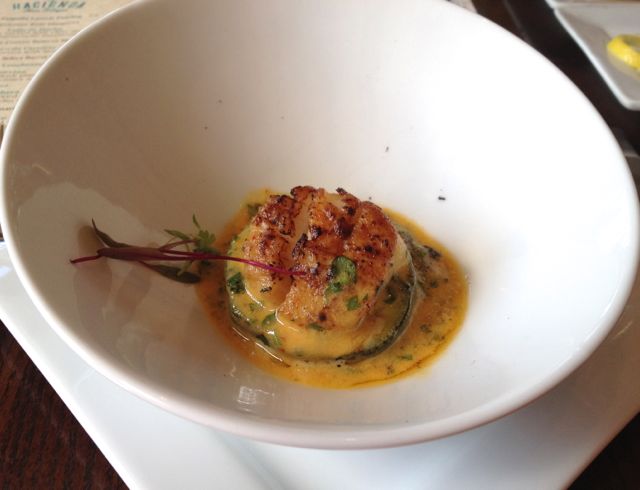
First Course: Callo de Hacha – Grilled Scallop served with chile de arbol foam and Huitlacoche mushrooms
This was quite tasty, although we weren’t impressed with the pairing (most likely because we didn’t like the silver tequila).
Second Tequila: Milagro Select Barrel Reposado Tequila
- Tasting Notes
- this tequila undergoes three distillations, it spends 10 months in French Oak barrels
- color = very pale straw
- transparency = 100%
- body = thick slow tears
- nose: (1) sweet alcohol, (2) less peppery than the silver, and (3) sweet & spicy
- taste = our favorite, smoother, not as oaky as some
The food in this course was perhaps the least tasty of all 4 courses we were served.
It definitely wasn’t bad, in fact, the corn tortilla was quite good and so was the pork – perhaps it just didn’t have enough “zing”…
The tequila paired nicely with it (although nora preferred the reposado with the fish dish in the next course).
Third Tequila: Gran Centenario Anejo Tequila
- Tasting Notes
- agaves grow in the fields for 7 years, so they’re quite mature
- aged in deeply toasted American White Oak barrels
- color = amber, golden, honey toned
- density/body = tears are even slower and even thicker than before
- smell = rich, honey, sugary oak
- taste = not as peppery, can definitely taste the oak (foretaste) and the pepper (aftertaste)
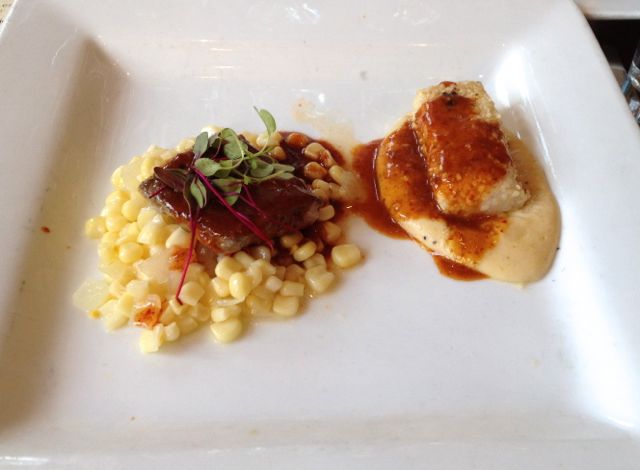
Third Course: Entree Combination – Arrachera (New York steak served with esquites and chile ancho sauce) and Corvina (Corvina, fish, served with plantains puree and tres chiles sauce)
- The ESCRITES is corn prepared with onion, fresh and crunchy, sweet too.
- nora’s steak was cooked medium rare and was quite good, nick’s was close to well-done and too chewy
- we both liked the corvina dish, the fish was cooked but still moist and flaky, the three chile sauce (ancho, pasilla, and arbor chiles) was particularly tasty (it was spicier than the Durban Chicken from Sanaa but in a way so that you can taste the chiles instead of just getting heat) – we asked Davin after the luncheon was opening if it was on the menu, he said no, that the dishes were created especially for this luncheon, but that the menu would be changing at some point in November and he was considering putting the corvina on the menu instead of tilapia (yay! tilapia is yuck)
- the pureed plantains was interesting, on the palate it was like extremely smooth mashed potatoes
Fourth Tasting: Agavero Liquor
- Tasting Notes
- this isn’t actually a tequila,it is a liquor made with reposado and anejo tequilas and the damiana flower
- we didn’t “taste” this liquor, it was for dessert
- the cajeta caramel sauce is unique because it’s made with goats milk (and yes, it tasted different from regular caramel)
- this dessert was good, but VERY sweet
- Umberto encouraged us to pour our agavero liqueur over the top to help soften the meringue
During dessert, Umberto proposed a quiz of sorts… He’d ask 3 questions, and whoever answered correctly would win either a jalapeno margarita or an avocado margarita.
- What are the two kinds of tequila? 100% blue agave tequila & “just” tequila
- Who oversees the production of tequila? (must have missed this answer – no one else knew the answer either, so we got 4 questions)
- What are the five types of 100% blue agave tequila? blanco, reposado, anejo, extra anejo, and joven
- What do you say when drinking tequila? arriba, abajo, al centro, da’ entro
Nora answered the first question correctly (she declined to answer #3 and #4 – didn’t want to be a margarita hog)… Her choice, a jalapeno margarita!
Just Notes…
- There are a lot of similarities between tequila and scotch!
- Both are aged in barrels made of American Oak or some other Oak (Tequila = French Oak & Scotch = Spanish Oak for some and French Oak for others)
- American Oak imparts a taste that is smoother/sweeter just like with scotch
- Other oaks impart tastes that are more powerful
- Some tequilas are aged in American bourbon barrels
- Barrels can be used up to 5 times (government limit, just like scotch)
Wrapping it up neatly…
- This didn’t disappoint and we’re glad that we decided to do it again this year!
- The food was even better than last year, and it’s nice that there’s a place at WDW to show guests that Mexican food isn’t all tacos and nachos
- The presentation was excellent this year, Umberto’s enthusiasm and passion came through, he was easy to understand (most of the time) and he didn’t seem rushed (even though he imparted A LOT of information)
- There were a lot of laughs and fun at the luncheon, however, the people that came in late & drunk & sat next to us were not appreciated
- Don’t want to end on a sour note, would we do this again? YES! Would nora do it again this year? YES!
- We believe that the lunches (so far over the years) are a much better fit for us than the Signature Dinners

